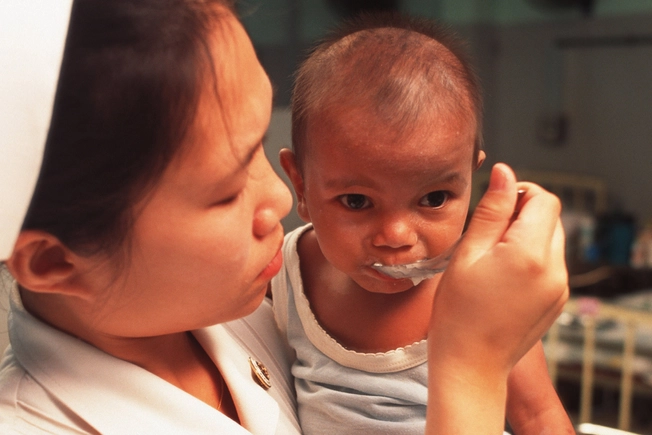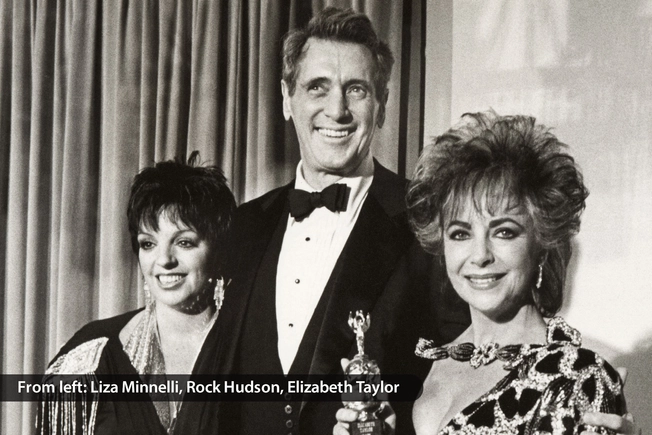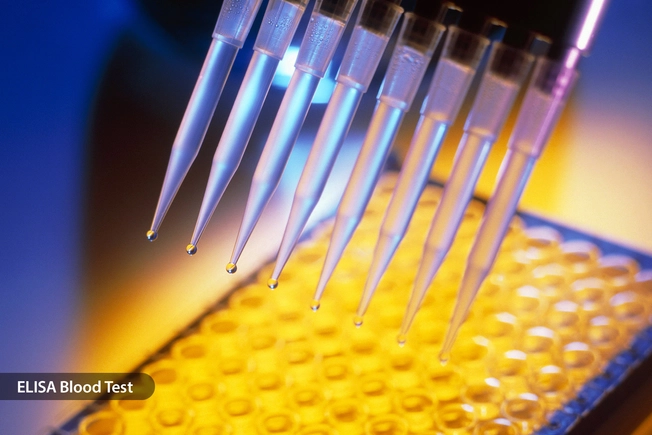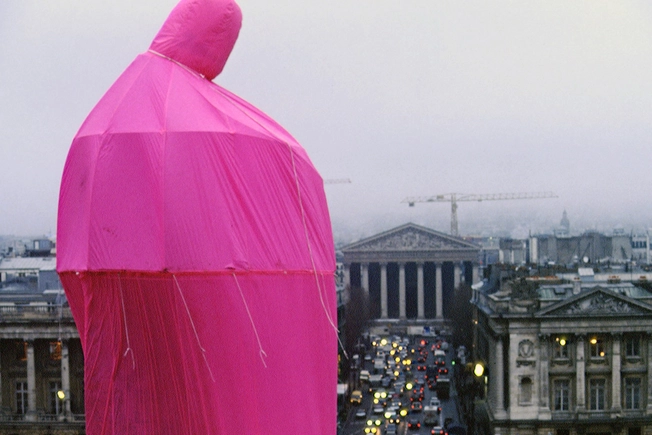- Overview
- Symptoms
- Causes & Risks
- Screening & Testing
- Diagnosis
- Treatment
- How HIV Affects the Body
- Opportunistic Infections
- Complications
- Living With
- Dating & Relationships
- Support & Resources
- Prevention
- Appointment Prep
- View Full Guide
AIDS Retrospective Slideshow: A Pictorial Timeline of the HIV/AIDS Pandemic


AIDS Timeline
AIDS-related illnesses have killed more than 40 million people since 1981. An estimated 1.2 million Americans are among the nearly 39 million people worldwide who are now living with HIV, the virus that causes AIDS. How did we get here?

Circa 1900: From Monkeys to Humans
Between 1884 and 1924, somewhere in West Central Africa, a hunter kills a chimpanzee. Some of the animal's blood enters the hunter's body, possibly through an open wound. The blood carries a virus that’s harmless to the chimp but lethal to humans: HIV. The virus spreads as colonial cities sprout up, but other causes get the blame.

1981: First Cases Recognized
In June, the CDC publishes a report from Los Angeles of five young homosexual men with fatal or life-threatening PCP pneumonia. Almost never seen in people with healthy immune systems, PCP turns out to be one of the major so-called "opportunistic infections" that kill people with AIDS.
On July 4, the CDC reports that an unusual skin cancer -- Kaposi's sarcoma, or KS -- is killing young, previously healthy men in New York City and California. By year’s end, 337 cases of severe immune deficiency are reported in the United States. Of those, 130 die.

1982: AIDS Gets Its Name
The CDC called the new disease acquired immune deficiency syndrome, or AIDS. In addition to men who have sex with men,it’s seen in people with hemophilia, a rare blood disorder. This convinces scientists that an infectious agent in contaminated blood spreads the disease.

1983: The Public Gets Worried
Women having sex with infected men start getting AIDS. The CDC warns that the disease could spread through heterosexual sex. It also reports that HIV-positive women can pass the disease to a child during pregnancy or shortly after childbirth. Worries grow, along with false rumors of “household spread,” the idea that you can pass it to people through everyday contact. In New York, reports suggest landlords are evicting people with AIDS.

1983: Scientists Discover HIV
Pasteur Institute researchers Luc Montagnier and Francoise Barre-Sinoussi, shown here with team manager Jean-Claude Chermann, isolate a virus from the swollen lymph gland of someone with AIDS. They call it lymphadenopathy-associated virus, or LAV. Independently, UCSF researcher Jay Levy isolates ARV -- AIDS-related virus. Not until 1986 does everybody agree to call the virus HIV: human immunodeficiency virus.

1985: Hudson Dies, Hysteria Builds
Actor Rock Hudson, shown here at the 1985 Golden Globes with fellow actors and AIDS benefactors Liza Minelli and Elizabeth Taylor, becomes the first major American public figure to announce he has AIDS in July. He dies in October. Hudson leaves $250,000 to help create the American Foundation for AIDS Research (amfAR). Actress Elizabeth Taylor is the organization’s first chairman.
In August, Ryan White, an Indiana teenager with AIDS, is turned away from his middle school. The legal battle that follows draws attention to the disease. By December, a Los Angeles Times poll says most Americans favor quarantining people with AIDS.

1985: Testing Begins
In March, the FDA approves ELISA, the first commercial blood test for HIV. Blood banks began to screen donations.
About a month later, the first International AIDS Conference happens in Atlanta.
In December, Dwight Burk dies of AIDS at 20 months old. He’s believed to be the first child of a hemophiliac to be born with the condition. His father, Patrick, got the disease from regular doses of blood clotting concentrates. Before he knew he had the disease, he passed it to his wife, Lauren, who became pregnant with Dwight.

1986: Ryan White Goes Back to School
In April, after a 10-month legal battle, a judge allows Ryan White to return to school, ruling that he poses no health threat to his fellow students.

1987: Princess Diana Reaches Out
In April, at the opening of an HIV/AIDS unit at London’s Middlesex Hospital, Princess Diana -- without gloves -- shakes the hand of a person with AIDS. At the time, some believe the disease can spread via casual contact.

1987: ACT UP Forms, Makes Impact
ACT UP forms to protest the $10,000 per year cost of AZT. It adopts the motto, “SILENCE=DEATH.” A year later, the group stages a sit-in at FDA headquarters to protest the slow pace of approval for HIV/AIDS drugs. More than 1,000 people show up. Police arrest 176 of them. Eight days later, the FDA announces procedures to streamline the process.

1987: Liberace Dies
This Emmy-award winning pianist dies in his home at 67. His doctor reports the cause of death as a heart attack, but the county orders an autopsy. It reveals an AIDS-related illness as the cause. The controversy spawns a national discussion about privacy for people with AIDS.

1988: World AIDS Day
The World Health Organization recognizes the first World AIDS Day on Dec. 1. It becomes the first global health awareness day. Created to show support for those living with the disease and to remember those who have died from it, the event continues to this day.

1991: AIDS Hits Home
On Nov. 7, Los Angeles Lakers star Ervin “Magic” Johnson announces he is HIV positive and that he will retire from basketball.
Two and a half weeks later, on Nov. 24, Freddy Mercury, lead singer of the rock band Queen, dies from bronchial pneumonia, a complication of AIDS. Both deaths raise awareness of the disease and the different ways it spreads.

1993: The Message Gets Out
Awareness measures about AIDS and HIV go to the next level:
- President Clinton launches the White House Office of National AIDS Policy.
- ACT UP and Benetton put a giant condom on the Place de la Concorde in Paris to illustrate the importance of practicing safe sex.
- The play Angels in America wins the Pulitzer Prize for drama.
- Tom Hanks stars in the movie Philadelphia, about a lawyer with AIDS. It’s the first big-budget Hollywood film about the disease. Hanks won the Academy Award for Best Actor for his performance.

1994: The Real World
Activist Pedro Zamora (circled at right) becomes a cast member on the third season of MTV's The Real World. One day after the season finale, he dies of AIDS at age 22.
Later that year, the FDA approves the first oral HIV test.

1996: A Breakthrough?
Highly active anti-retroviral therapy, or HAART, can cut HIV viral loads to undetectable levels. Hope surges when AIDS researcher David Ho, MD, suggests the treatment could eliminate HIV from the body. He's wrong. Researchers later find that HIV hides in dormant cells. But U.S. AIDS deaths drop by more than 40%.

1998-2000: So Many Pills
Awareness grows that HAART has serious side effects. Treatment failures highlight the need for newer, more powerful drugs. In the years that follow, the FDA approves new classes of drugs that make HIV treatment safer, easier, and more effective. But the drugs still don’t cure AIDS.

2001-2002: The Global Problem Grows
AIDS becomes the leading cause of death worldwide for people ages 15 to 59.
UN Secretary General Kofi Annan proposes the Global Fund to Fight HIV/AIDS, TB and Malaria. The purpose of the Global Fund is to raise, manage, and distribute funds to fight HIV and AIDS.
Treatment is still unavailable to the vast majority of people living with HIV. Only 1% of the 4.1 million sub-Saharan Africans with HIV receive anti-HIV drugs.

2003: President Bush Gets Involved
President Bush announces the $15 billion President's Emergency Plan for AIDS Relief. Critics pan the prevention portion for over-emphasis on abstinence, or avoiding sex. But the proposal provides needed HIV/AIDS treatment funds to 15 nations.

2006-2007: Treatment Works?
Researchers say HIV treatment is shown to extend life by 24 years -- at a cost of $618,900.
Meanwhile, Merck's HIV vaccine fails in clinical trials. It’s the latest in a long line of failures. But new vaccines continue to move through the development pipeline.
In a preventative measure, UNAIDS recommends adult circumcision after it's found to cut HIV spread from women to men by half in regions where it’s common.

2008: A Reality Check
The CDC says HIV in America is more widespread than we thought. There are 1.1 million infected, up 11% from 5 years prior. New HIV infection rates soar among men who have sex with men.
Meanwhile, Luc Montagnier and Francoise Barre-Sinoussi receive the Nobel Prize in medicine for discovery of the virus.

2012: PrEP Arrives
The FDA approves pre-exposure prophylaxis, or PrEP. It’s a daily pill people at high risk for HIV can take to lower their odds of getting the virus. Studies say that if taken every day, PrEP lowers the risk of getting HIV from sex by about 99% and cuts the risk of getting it from injections by about 74%.
A couple of weeks before PrEP’s approval, the FDA also approves the first at-home HIV test.

2013: Cured?
In March, the first well-documented case of an HIV-infected child who appears to be cured of HIV goes public. The child, known as “The Mississippi Baby,” begins antiretroviral treatment at birth and shows no levels or signs of the virus. A year later, after the baby shows no signs of HIV for more than 2 years, the virus returns. This spurs more research on how the virus behaves differently in infants and adults.

2016-2017: New Guidelines; the Gates Sponsor PrEP
In 2016, the CDC updates treatment recommendations for nonoccupational postexposure prophylaxis (nPEP), to prevent HIV spread by sex, drug use, or any other nonwork-related method. The update includes drugs not available when the guidelines first came out in 2005.
In January 2017, the Bill and Melinda Gates Foundation invests $140 million toward the development of an implant that could provide a constant supply of PrEP medication to people with HIV.

2019: History-Making Transplant
On March 25, an HIV-positive donor gives a kidney to an HIV-positive recipient for the first time in the United States. Nina Martinez, 35, donates her kidney to an anonymous recipient. The procedure takes place at Johns Hopkins.
Donation used to be impossible for someone with HIV due to fears that the virus would make kidney disease more likely. But new antiretroviral drugs help the patient maintain their overall health.